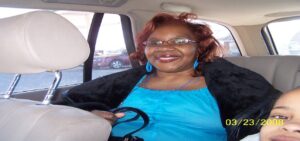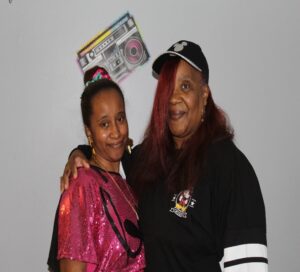“I’m Still Here”: The Survivor Story

By Ta’Niya Kees
Phyllis Owens. A mother, sister, grandmother, daughter, and aunt. Most Importantly she’s a survivor. We sat down with two cups of iced tea readily available, and a few pieces of sugar free candy spread out on the table. Diving deep within my grandmother’s
health history was no easy rollercoaster, but she embraces her ride to survival.
Growing up she was the eldest of three children. At the mere age of ten, she was forced to step up more for her mother and siblings as her father’s sudden death had shook the family in the worst way possible. With the loss of her father, she became “lost, sad, and an introvert.” My grandmother also stated that she would have these sudden pains in her side during her teens, but never thought too much about it due to everything else that was going on in her life at the time. She looked off to the window while saying, “I ended up moving out at the young age of eighteen to spread her wings and explore.” She was able to spread her wings and ended up becoming pregnant with her first and only child, my mother, Niyana.
Life felt as if it was getting better for Phyllis. She had graduated from high school and had a beautiful baby girl. Even though she was a single mother, she took pride in raising her child on her own. When Niyana turned about thirteen, she noticed her mother was going through immense health changes. I sat down with her to understand her positioning about her mother falling ill. She states, “I didn’t really want to go on with life. Not knowing what was going to happen with my mother was very hard for me. She was all I had, and I didn’t want to face life without her.” After talking to Phyllis about her daughter’s thoughts about the illness, she walks me through her medical history. Owens turns to me and says:

“On May 24, 1993, I was having sinus trouble, I took two Tylenol sinus pills, and when I woke up the next day all I could see was blood. My only brother, Larry took me to East Baltimore Medical Center and when I got to the door I nearly passed out and the paramedics were called to take me to Johns Hopkins hospital where I was told that I only had a pint of blood left in my body with no iron or platelets. I spent 6 weeks in the hospital with no diagnosis, but I was given prednisone to combat my bone marrow disease and was sent home without any insulin and my blood sugar hit 1300 and I was in a diabetic coma for a week.”
We paused for a second and she looked at me to see how I was processing this first part of her medical history to see if my mind would handle the next part. She looked through me and she captured my soul with her story. Phyllis went on to walk me through her invitation to the National Institute of Health (NIH) in 1995. It was NIH who diagnosed her with a very rare Myelodysplastic Anemia. She described it as, “a bone marrow disease that rejects new blood cells, so the body sends the blood to other places in the body and one can bleed to death or just suffer from severe anemia and require blood transfusions to live.”
Phyllis was only 32 and had already lost her father, had been raising her daughter on her own, diagnosed with diabetes and had been diagnosed with a type of cancer that affected her bone marrow. Just when it seemed as if nothing else could go wrong, she had to undergo surgery on her right eye which ended up becoming infected and led to her losing her sight completely in her right eye. Phyllis looks at me and vividly describes how it felt for her to undergo surgery, “I was scared about the operation. I need to be in control of me. Not people, but me. I can’t be in control if I’m sleeping.” With the hatred of not being able to be in control of herself, another health issue arose that needed an operation to deal with it. Phyllis crosses her legs and goes into depth about being told she has a brain tumor.
“In 1997 I started feeling better, things were starting to slow down, and then there was a very sharp pain in my right arm that I could not explain. I thought it was from exercising, but I was wrong. Dr. Salvatori suspected a brain tumor and ordered an MRI and his suspicions were correct. I was diagnosed with a benign tumor in my pituitary. My brain surgery was performed in September of 1997 and during surgery, I required a blood transfusion (and) that was my last transfusion until this day. When most of the tumor was removed, my life was starting to have some normal feel to it, because all the symptoms I was having came to a halt. I was moving in the right direction to heal; my diabetes

went away, my marrow started working correctly and I was gaining my independence back.”
Phyllis was ready for the fight. She felt stronger than ever. For 16 years, her health seemed as if it was getting better, but diabetes came back to knock on her door. “March of 2014 when my diabetes returned with a vengeance. This time around was a lot easier, because I know what to expect and I am in remission from the other health issues in the past.”
Phyllis Owens is 58 years old. For 48 of her 58 years, she has been dealing with mental and physical pain. For 40 years she has been a mother. 19 years as a grandmother. The number that stands out the most is 24. On May 25, she will have been in remission for 24 years. A true survivor and warrior who has beat the odds. We ended our interview as she hugged me and said, “It wasn’t my time because I’m still here.”

